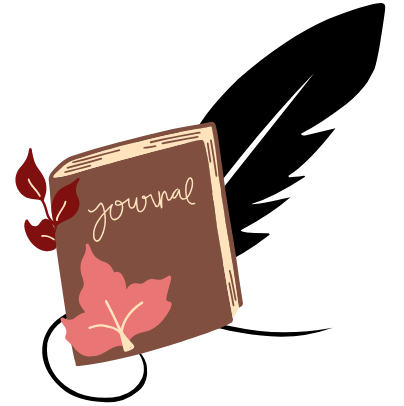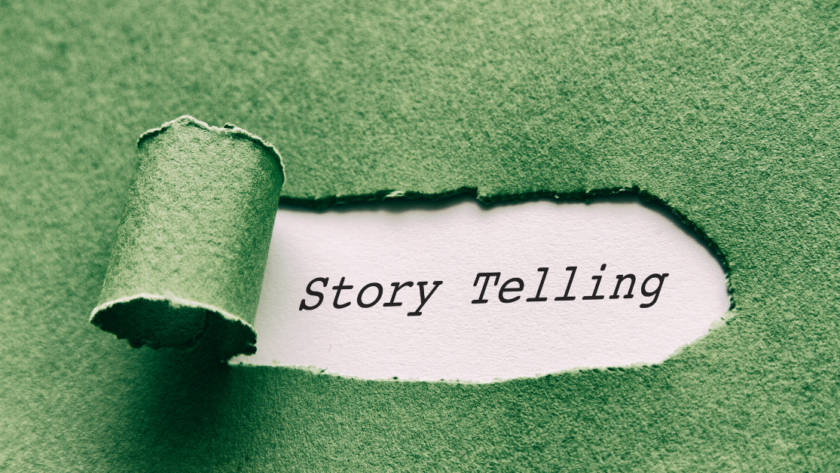As a seasoned writer who has penned countless short stories, I’m thrilled to share my insights and techniques to help you start on your own literary journey.
Writing your first short story is an exhilarating and transformative experience that will challenge you, surprise you, and reveal depths of creativity you never knew you possessed.
Understanding the Essence of Short Story Writing
Short stories are concentrated doses of narrative magic. They demand precision and impact, with every word pulling it’s weight and every sentence propelling the story forward.
The beauty of short fiction comes from it’s ability to capture a moment, an emotion, or an idea with laser-like focus, distilling the human experience into it’s most potent form.
Laying the Foundation: Your Story’s Blueprint
Before you begin writing, it’s crucial to understand the basic elements that form the backbone of any great short story:
Character: The Heart of Your Tale
Your protagonist serves as the lens through which readers experience your story. Create a character that’s vivid and relatable, someone with wants, fears, and flaws.
In short fiction, you don’t have the luxury of extensive backstory, so reveal your character through their actions and decisions.
To make your character memorable, consider giving them a defining trait or quirk. Perhaps they always wear mismatched socks or can’t resist petting every dog they see.
These small details can make your character feel more real and relatable to your readers.
Conflict: The Engine of Your Narrative
Conflict drives your story forward. Your character must want something and face obstacles in achieving it.
This doesn’t have to be earth-shattering – internal struggles can be just as compelling as external ones.
For example, your protagonist might be struggling with the decision to move to a new city for a job opportunity, torn between their career ambitions and their fear of leaving behind everything familiar.
The conflict could play out through a series of small moments and decisions, as opposed to grand, dramatic events.
Use sensory details to bring your world to life. The crunch of autumn leaves underfoot or the acrid smell of city smog can instantly transport your reader into your story’s environment.
Consider how your setting influences your character and plot. A story set in a bustling metropolis will have a very different feel from one set in a quiet, rural town.
The setting can also serve as a source of conflict or a reflection of your character’s internal state.
Plot: The Journey of Your Tale
In a short story, your plot should be tight and focused. Start as close to the main action as possible and keep things moving. Every scene should serve a purpose, either advancing the plot or revealing character.
Consider using a simple plot structure, such as:
- Introduction: Establish your character and setting
- Rising Action: Introduce the conflict and build tension
- Climax: The turning point of your story
- Falling Action: The consequences of the climax
- Resolution: Tie up loose ends and provide closure
Remember, in a short story, these elements often overlap and happen quickly. You might even choose to focus primarily on one or two of these stages, depending on the story you want to tell.
Crafting Your Opening: Hook, Line, and Sinker
The opening of your story is crucial. You need to grab your reader’s attention and give them a reason to keep reading.
Here are a few techniques to consider:
Start with Action
Throw your reader into the middle of a scene. This immediately engages the reader and creates a sense of momentum.
For example:
“The alarm blared as Sarah fumbled with her keys, her heart pounding in her chest. She had exactly three minutes to disarm the system before the police arrived.”
Pose a Question
Intrigue your reader with a mystery. This creates immediate tension and makes the reader want to find out more.
For example:
“Why was there a pair of muddy boots in Sarah’s kitchen when she lived alone?”
Use a Striking Image
Paint a vivid picture that sets the tone for your story. This can immediately immerse the reader in your world.
For example:
“The old oak tree stood alone in the field, it’s gnarled branches reaching towards the sky like arthritic fingers.”
Remember, your opening should do more than just hook the reader – it should also establish the tone and mood of your story. A humorous opening sets very different expectations from a somber or mysterious one.
The Art of Dialogue: Making Your Characters Speak
Dialogue is one of the best resources in a writer’s arsenal. It can reveal character, advance the plot, and create tension.
Here are some tips for crafting effective dialogue:
Make Each Character’s Voice Distinct
Each character should have their own way of speaking. This can be influenced by their background, education, personality, and current emotional state.
A nervous teenager will speak very differently from a confident businesswoman.
Use Dialogue to Reveal Information Naturally
Avoid using dialogue for exposition dumps. Instead, let information come out naturally through conversation.
For example, instead of having a character say, “As you know, I’ve been a doctor for 20 years,” you could have them say, “I’ve seen a lot of unique cases in my time at the hospital, but this one takes the cake.”
Remember That Real People Rarely Speak in Perfect Sentences
People interrupt each other, use filler words, and sometimes struggle to articulate their thoughts. Incorporating some of these elements can make your dialogue feel more realistic.
However, be careful not to overdo it – you want your dialogue to feel natural, not difficult to read.
Use Dialogue Tags Sparingly
“Said” is often the best dialogue tag because it’s nearly invisible to the reader. Use more descriptive tags like “shouted” or “whispered” only when necessary.
Often, you can skip the tag entirely if it’s clear who’s speaking.
Show Emotion Through Action
Instead of relying on adverbs to describe how something is said, show the character’s emotion through their actions. For example, instead of writing, “‘I’m fine,’ she said angrily,” you could write, “‘I’m fine.’ She slammed the door behind her.”
Building to the Climax: Tension and Pacing
As you approach the climax of your story, pay close attention to pacing. You want to build tension gradually, like a rubber band being stretched tighter and tighter.
Use Sentence Structure to Control Pace
Short, punchy sentences can increase the sense of urgency and tension. Longer, more complex sentences can slow things down and create a sense of contemplation or dread.
Mix these up to control the rhythm of your story.
Create Obstacles
As your character gets closer to their goal, throw increasingly difficult obstacles in their way. This ratchets up the tension and makes the reader wonder how (or if) the character will overcome these challenges.
Use Foreshadowing
Hint at what’s to come to create a sense of anticipation. This can be done through dialogue, description, or even seemingly unimportant details that later take on greater significance.
Control Information Flow
Revealing information at the right moment can create suspense. Sometimes, letting the reader know something the character doesn’t can create dramatic irony and increase tension.
The Art of the Ending: Leaving a Lasting Impression
Your ending should feel both surprising and inevitable. It should decide the main conflict of your story, but that doesn’t mean it has to be a happy resolution.
Some of the most powerful short stories leave readers with a sense of ambiguity or unease.
Types of Endings to Consider
- Twist Ending: A sudden revelation that changes the reader’s understanding of the entire story.
- Open Ending: Leaves some questions unanswered, allowing the reader to draw their own conclusions.
- Circular Ending: Brings the story back to where it began, but with the character changed by their experiences.
- Epiphany Ending: The character has a sudden realization that changes their perspective.
Tips for Crafting a Strong Ending
- Avoid Deus Ex Machina: Don’t introduce new elements at the last minute to decide your conflict.
The resolution should arise naturally from the story you’ve told.
- Tie Up Loose Ends: Address the main questions and conflicts you’ve raised in your story.
If you leave some things unresolved, it should be a deliberate choice, not an oversight.
- Emotional Resonance: Your ending should evoke an emotional response in your reader, whether it’s satisfaction, shock, or thoughtful contemplation.
- Full Circle: Consider how your ending relates to your beginning.
Does it answer questions raised in the opening?
Does it show how your character has changed?
Remember, the ending is what will linger in your reader’s mind after they finish your story. Make it count.
Revision: Where the Real Magic Happens
Once you’ve written your first draft, set it aside for a few days. When you come back to it, read it with fresh eyes.
Be ruthless in your editing – every word should earn it’s place.
Tips for Effective Revision
- Read Your Story Aloud: This can help you catch awkward phrasing, repetitive words, and pacing issues.
- Look for Places to Show Rather Than Tell: Instead of saying “She was angry,” show her slamming doors or speaking through gritted teeth.
- Cut Unnecessary Words: Be particularly wary of adverbs and adjectives.
Often, a strong verb can do the work of a verb-adverb combination.
- Check Your Dialogue: Make sure each character has a distinct voice and that the dialogue sounds natural when read aloud.
- Examine Your Opening and Ending: Do they work together to create a satisfying arc?
Does your opening hook the reader?
Does your ending provide a satisfying resolution?
- Get Feedback: Share your story with trusted readers.
Ask them specific questions about what worked and what didn’t.
It’s about refining your story, deepening your characters, and ensuring that every element is working together to create the effect you want.
Exercises to Hone Your Craft
- Write a Complete Story in 100 Words: This will force you to focus on the essentials of storytelling and make every word count.
- Rewrite a Familiar Fairy Tale from the Villain’s Perspective: This exercise helps you practice seeing events from different viewpoints and can lead to interesting character development.
- Eavesdrop on Conversations: Go to a public place and listen to how people actually talk.
Use snippets of overheard dialogue as inspiration for a story.
- Write the Same Scene from Multiple Perspectives: This can help you understand how different characters might interpret the same events differently.
- Describe an Everyday Object in Detail: Practice your descriptive writing by making something ordinary seem fascinating.
- Write a Story Based on a News Headline: This can help you practice turning real-world events into fiction.
- Write a Story Using Only Dialogue: This will help you master the art of revealing character and advancing plot through conversation.
The Importance of Reading
As you begin your short story writing journey, immerse yourself in the works of master short story writers. Pay attention to how they structure their stories, use language, and create memorable characters.
Some authors to consider include:
- Alice Munro
- Raymond Carver
- Jhumpa Lahiri
- Jorge Luis Borges
- Flannery O’Connor
- Ernest Hemingway
- Lorrie Moore
- George Saunders
Analyze their stories. How do they begin?
How do they end?
How do they create tension? How do they reveal character?
The more you read, the more tools you’ll have in your own writing toolkit.
Frequently Asked Questions
How long should a short story be?
Short stories typically range from 1,000 to 7,500 words, but there’s no hard and fast rule. Flash fiction can be as short as a few hundred words, while some short stories stretch to 10,000 words or more.
How do I come up with ideas for short stories?
Ideas can come from anywhere – personal experiences, overheard conversations, news articles, or even random writing prompts. Keep a notebook handy to jot down ideas as they come to you.
Should I outline my short story before writing?
Some writers prefer to outline, while others like to uncover the story as they write. Try both methods and see what works best for you.
Even a loose outline can help keep you focused as you write.
How do I create believable characters?
Start by giving your characters clear goals, fears, and flaws. Think about their background and how it shapes their actions.
Show their personality through their dialogue, actions, and thoughts.
How can I improve my descriptive writing?
Practice using all five senses in your descriptions. Instead of just describing how something looks, consider how it sounds, smells, feels, and even tastes.
Be specific in your descriptions to make them more vivid.
How do I know when my story is finished?
A story is finished when it decides the main conflict and leaves the reader with a sense of completion. However, many writers find that they need to revise their work multiple times before it feels truly finished.
Can I send my short story for publication?
Absolutely! Many literary magazines and online publications accept short story submissions.
Research potential markets to find ones that fit your style and genre.
How do I handle writer’s block?
Writer’s block can be overcome by setting a regular writing schedule, trying writing prompts, or simply writing through it – even if what you’re writing doesn’t seem good at first. Sometimes, taking a break and coming back to your story with fresh eyes can also help.
Key Takeaways
- Focus on a single moment, emotion, or idea in your short story.
- Create vivid, relatable characters with clear goals and obstacles.
- Start with a strong hook to grab your reader’s attention.
- Build tension throughout the story, leading to a satisfying climax.
- Revise ruthlessly, making sure every word earns it’s place.
- Read widely to improve your craft and learn from master storytellers.




